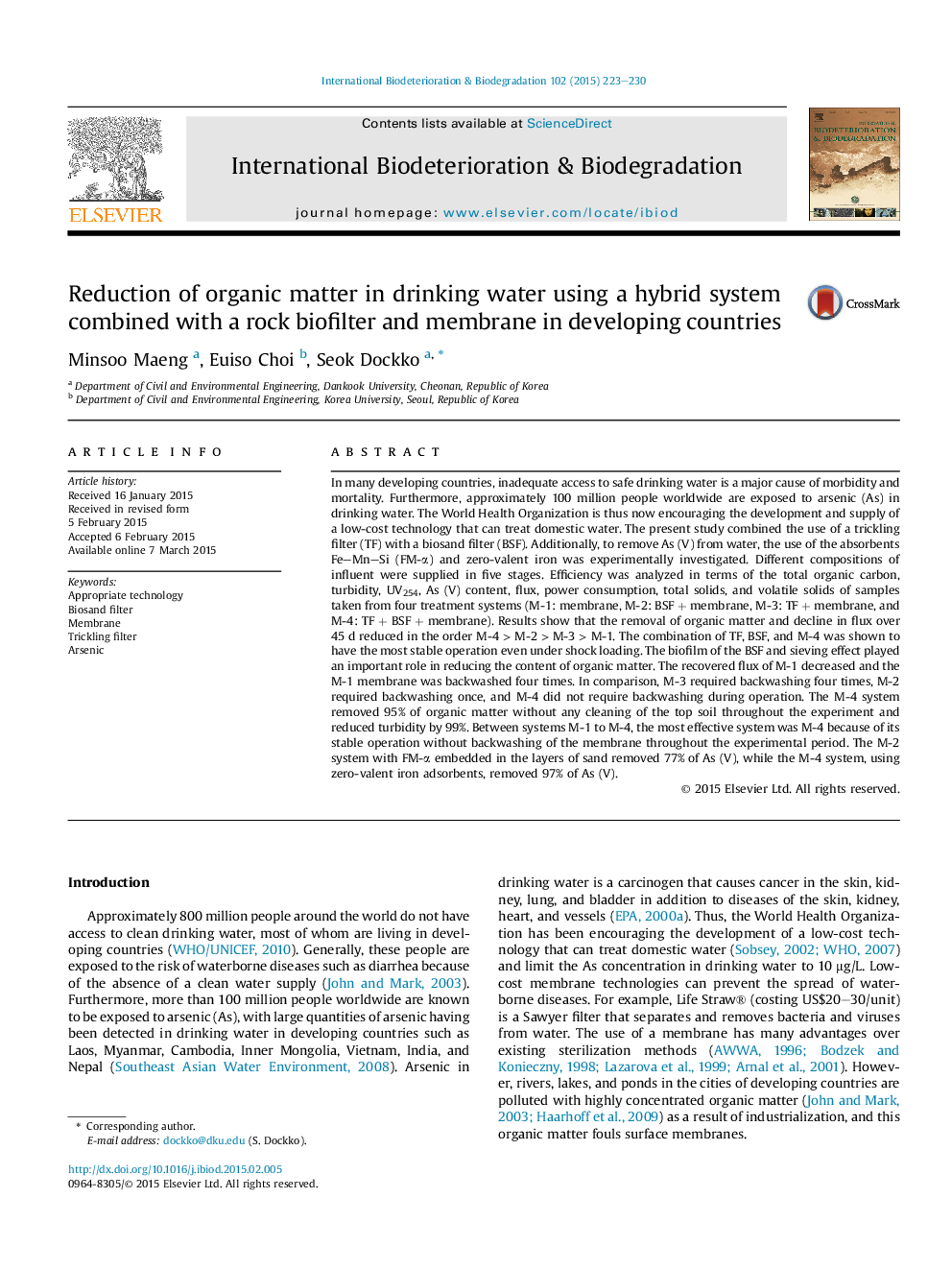| کد مقاله | کد نشریه | سال انتشار | مقاله انگلیسی | نسخه تمام متن |
|---|---|---|---|---|
| 4364372 | 1616315 | 2015 | 8 صفحه PDF | دانلود رایگان |
• BSF combined with trickling filter showed greater efficiency than BSF only.
• Trickling filter with BSF can remove highly concentrated organic matters.
• For sustainable operating of membrane, BSF or TBSF should be combined.
• M-4 is feasible to remove both organic matter and arsenic.
In many developing countries, inadequate access to safe drinking water is a major cause of morbidity and mortality. Furthermore, approximately 100 million people worldwide are exposed to arsenic (As) in drinking water. The World Health Organization is thus now encouraging the development and supply of a low-cost technology that can treat domestic water. The present study combined the use of a trickling filter (TF) with a biosand filter (BSF). Additionally, to remove As (V) from water, the use of the absorbents Fe–Mn–Si (FM-α) and zero-valent iron was experimentally investigated. Different compositions of influent were supplied in five stages. Efficiency was analyzed in terms of the total organic carbon, turbidity, UV254, As (V) content, flux, power consumption, total solids, and volatile solids of samples taken from four treatment systems (M-1: membrane, M-2: BSF + membrane, M-3: TF + membrane, and M-4: TF + BSF + membrane). Results show that the removal of organic matter and decline in flux over 45 d reduced in the order M-4 > M-2 > M-3 > M-1. The combination of TF, BSF, and M-4 was shown to have the most stable operation even under shock loading. The biofilm of the BSF and sieving effect played an important role in reducing the content of organic matter. The recovered flux of M-1 decreased and the M-1 membrane was backwashed four times. In comparison, M-3 required backwashing four times, M-2 required backwashing once, and M-4 did not require backwashing during operation. The M-4 system removed 95% of organic matter without any cleaning of the top soil throughout the experiment and reduced turbidity by 99%. Between systems M-1 to M-4, the most effective system was M-4 because of its stable operation without backwashing of the membrane throughout the experimental period. The M-2 system with FM-α embedded in the layers of sand removed 77% of As (V), while the M-4 system, using zero-valent iron adsorbents, removed 97% of As (V).
Journal: International Biodeterioration & Biodegradation - Volume 102, August 2015, Pages 223–230
